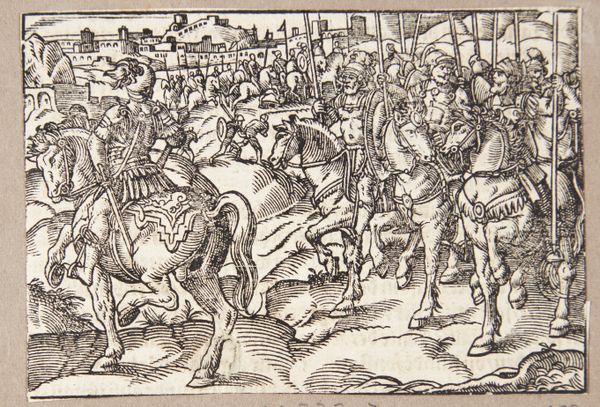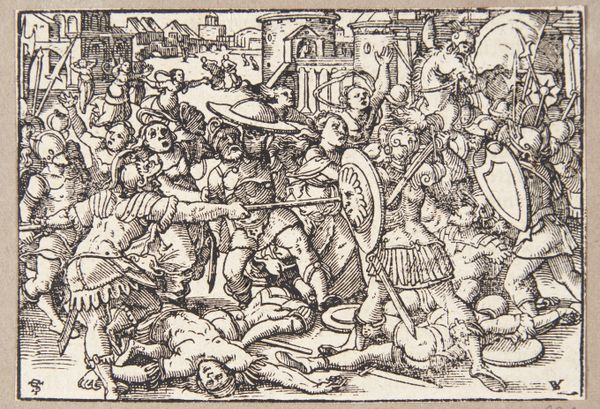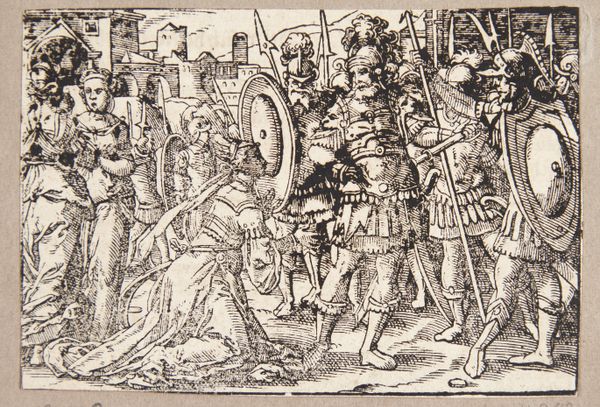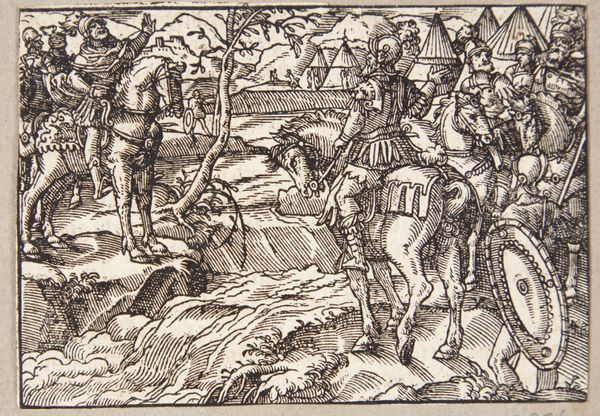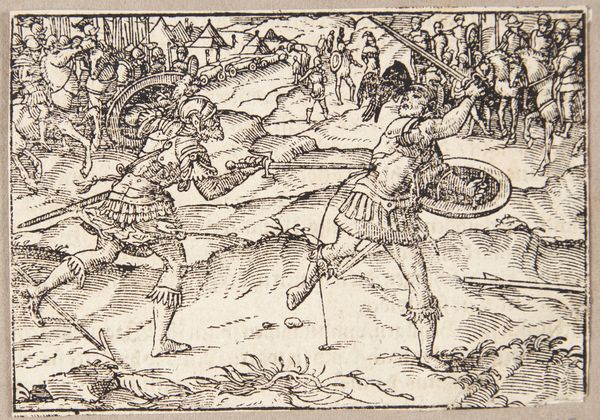
print, woodcut
# print
#
figuration
#
11_renaissance
#
woodcut
#
history-painting
#
northern-renaissance
Dimensions: 75 mm (height) x 105 mm (width) (bladmaal)
Editor: This is "De falskanske unge pisker deres forræderiske lærer," a woodcut print by Tobias Stimmer, created in 1574. It looks rather violent! There’s a cluster of figures attacking a larger, almost bare-chested man. What compositional elements strike you as significant here? Curator: Immediately, the emphasis on line and form is evident. Stimmer utilizes cross-hatching to create tonal variation and delineate the muscular structure of the figures, note how the contrasting lines define volume and texture. The dynamic composition guides the eye across the scene, creating a sense of chaos and unrest, don't you agree? Editor: Absolutely. The repetition of angled lines gives the figures movement. What do you think the figures in armor are meant to suggest, in contrast to the other figures? Curator: Note the stark contrast between the chaotic scene in the foreground and the static backdrop. This reinforces the sense of confinement, further directing attention toward the act of betrayal being played out. We can analyze Stimmer’s employment of hierarchical scale; a convention of representing a figure's importance through their size, here drawing the focus to the scene’s protagonist. Editor: So you are suggesting the size and use of line creates a feeling of, essentially, claustrophobia? Is it a way to visually amplify the violence of the act? Curator: Precisely. The composition is cleverly designed to trap our gaze within the central conflict, heightening the dramatic impact and discomfort of the event. Editor: I’m starting to appreciate how much can be communicated just through formal choices, irrespective of the historical context. Curator: Indeed. Reflecting on Stimmer’s strategic implementation of form, the artwork showcases how elements such as line and structure dictate the narrative far beyond merely illustrating an event.
Comments
No comments
Be the first to comment and join the conversation on the ultimate creative platform.
